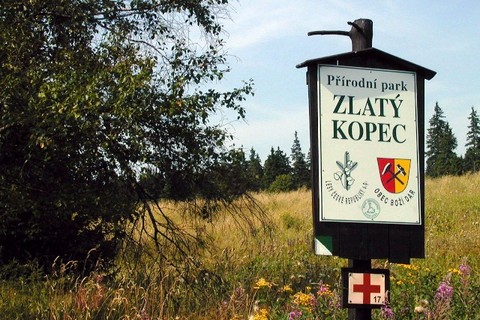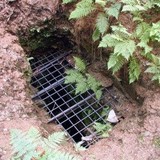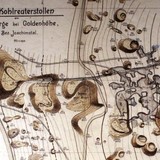Zlatý Kopec Hill
Valuable metals beneath the Krušné Hory Mts.
The historical mining district on Zlatý Kopec Hill on the Czech-Saxon border was developed by a number of adits and shafts. Metals are associated with a specific type of ore called skarn. Skarns form tabular bodies in phyllites and, in other places, also isolated blocks in granites. From a mineralogical perspective, they are characterized mainly by the presence of andradite garnet, amphibole, pyroxene and epidote. The major component is the highest quality iron ore - magnetite, with which zinc ore (sphalerite) and copper ore (chalcopyrite) are often associated. The skarns of Zlatý Kopec Hill near Boží Dar were also a source of tin. Due to this unique mineralization, the deposit is of special significance among the tin mines of the Krušné Hory Mts.
In view of the conveniently sloped terrain, the deposit on Zlatý Kopec Hill was developed by adits. The main skarn layer was worked by the Kohlreuter, Mathesius, Tříkrálová and Johannes Adits, and the Hugo and Hermann Adits led down to the deeper seated body called Hugo. Mining reached a depth of about 80 metres.









